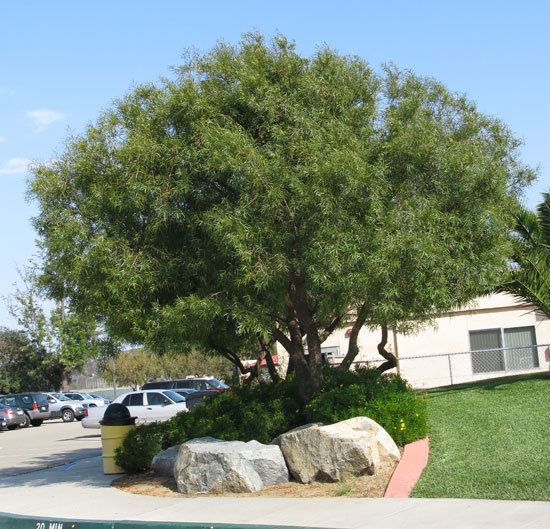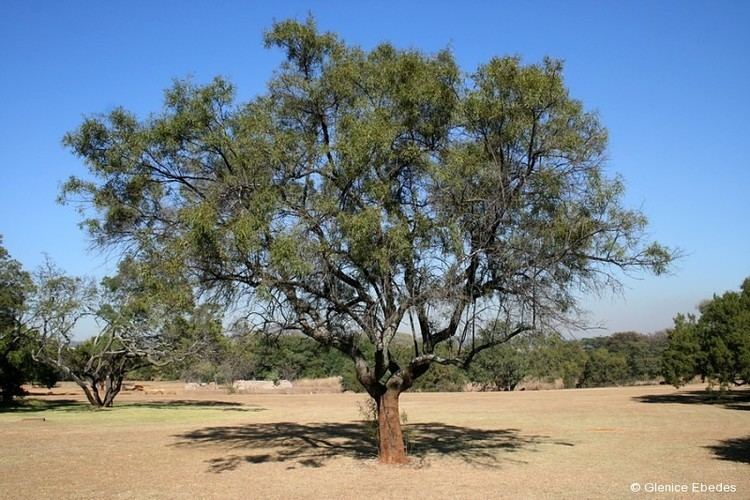Scientific name Rhus lancea Rank Species | Higher classification Searsia | |
 | ||
Similar Searsia, Searsia pendulina, Searsia leptodictya, Searsia pyroides, Celtis africana | ||
Searsia lancea commonly known as karee (English and Afrikaans), "hlokoshiyne" (isiZulu), "umhlakotshane" (amaXhosa), or "mokalaabata" (Northern Sotho), is an evergreen, frost hardy, drought resistant tree, which can reach up to 8 metres in height with a 5 metre spread. In North America, where it is naturalized, it is known as African sumac and willow rhus. It is one of the most common trees on the Highveld and in the Bushveld in South Africa, but not found in the Lowveld.

Description and uses

The tree has a graceful, weeping form and dark, fissured bark that contrasts well with its long, thinnish, hairless, dark-green, trifoliate leaves with smooth margins. It bears small yellow flowers followed on female trees by bunches of small yellow-green flattish fruits, which are relished by birds. In earlier times the fruits were pounded, water added and left to ferment, producing an evidently refreshing beer. The tree is a good shade tree for gardens, parks and pavements. It favours areas rich in lime in the Karoo and Namibia.

